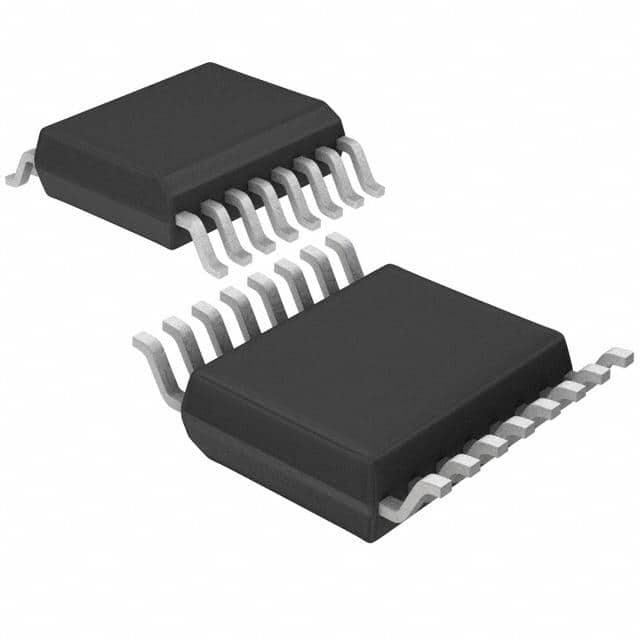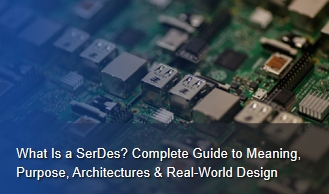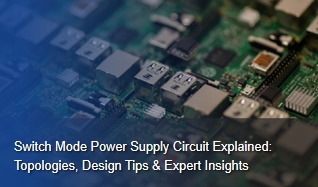Mastering Analog-Digital Integration: A Comprehensive Guide to ADCs and DACs in Modern Electronics
In the intricate world of electronics, Analog-to-Digital Converters (ADCs) and Digital-to-Analog Converters (DACs) are fundamental components that enable the seamless interaction between the analog and digital domains. This comprehensive guide explores the essential aspects of adc/dac-specialized, their working principles, applications, and the latest innovations. We will also highlight notable brands like Analog Devices, Renesas Electronics, and Broadcom, and how unikeyic Electronics can help you access these top-tier components.
Introduction to ADC and DAC Technologies
ADCs and DACs are critical for translating signals between analog and digital forms, bridging the gap between physical phenomena and digital processing.Analog-to-Digital Converters (ADCs) transform continuous analog signals into discrete digital data. This conversion allows for digital processing, storage, and transmission, which are essential for modern electronics.Digital-to-Analog Converters (DACs) take digital information and convert it back into analog signals. This is crucial for output devices that require an analog signal, such as speakers and analog displays.
Understanding these components is vital as they underpin various functions in electronics, from simple gadgets to complex systems.
How ADCs and DACs Work
The fundamental principles behind ADCs and DACs involve precise signal conversion techniques:ADCs sample an analog input signal at regular intervals. This involves:Quantization: Dividing the signal into discrete levels.Encoding: Representing these levels as binary numbers.
Common types of ADCs include:Successive Approximation ADCs: Offer a good balance between speed and resolution.Delta-Sigma ADCs: Provide high resolution and are ideal for low-frequency applications.Flash ADCs: Known for their speed, suitable for applications requiring fast conversion.
DACs convert digital data into an analog signal by:Decoding: Translating binary data into an analog waveform.Interpolation: Smoothing the output signal to approximate the continuous analog form.
Types of DACs include:Resistor-String DACs: Utilize a string of resistors for simple and reliable conversion.
Current-Steering DACs: Use current sources to provide high-speed and high-resolution outputs.
Applications of ADC/DAC in Modern Electronics
ADC/DAC-Specialized are employed across a wide range of applications, demonstrating their versatility:Sensor Interfacing: ADCs convert signals from sensors into digital data for processing. This is crucial in applications like temperature sensing, pressure monitoring, and environmental measurements.Audio Systems: DACs convert digital audio data into analog signals for playback through speakers, while ADCs are used to digitize audio signals for recording and processing.Industrial Control Systems: Both ADCs and DACs play roles in monitoring and controlling industrial machinery, ensuring accurate and reliable operation.Healthcare Devices: In medical equipment like ECG and EEG machines, ADCs convert physiological signals into digital data for analysis, while DACs are used in therapeutic devices.
Consumer Electronics: From smartphones to gaming consoles, ADCs and DACs are integral in converting and processing signals to deliver high-quality user experiences.
Choosing the Right ADC or DAC for Your Design
Selecting the appropriate ADC or DAC involves understanding various specifications and how they impact your application:Resolution: Higher resolution ADCs provide more precise digital representations of analog signals, while high-resolution DACs offer finer control over analog outputs.Sampling Rate: Determines how frequently the analog signal is sampled. Higher rates enable more accurate signal representation and faster processing.Power Consumption: For battery-operated or portable devices, choosing low-power ADCs and DACs is essential to prolong battery life.Noise Performance: Effective noise management is crucial for maintaining signal integrity. Look for components with low noise and high signal-to-noise ratios.
Specialized Needs: Depending on your industry—automotive, medical, telecommunications—select ADCs and DACs tailored to specific requirements.
High-Resolution ADCs and DACs in Precision Measurement Systems
In applications requiring extreme precision, such as scientific research and medical imaging, high-resolution ADCs and DACs are indispensable:High-Resolution ADCs: Ensure detailed and accurate data capture, essential for applications like spectroscopy and high-definition imaging.Advanced DACs: Provide precise control for applications requiring exact analog signal reproduction, such as in high-end audio systems.
Technological advancements continue to push the boundaries of what is possible in precision measurement, enhancing the performance and capabilities of these components.
Power Efficiency in ADC/DAC Design
Optimizing power efficiency is crucial, especially for portable and battery-powered devices. Strategies include:Low-Power Components: Choosing ADCs and DACs designed for minimal power consumption.Efficient Circuit Design: Implementing designs that balance power usage with performance needs.Efficient power management ensures longer battery life and more reliable performance in energy-constrained applications.Signal Integrity and Noise Reduction in ADC/DAC SystemsMaintaining signal integrity and reducing noise are essential for accurate data conversion:Filtering: Applying filters to remove unwanted noise and interference from the signal.Shielding and Grounding: Proper techniques to shield sensitive components and ensure effective grounding to minimize noise.
Implementing these techniques enhances the performance and accuracy of ADC and DAC systems.
Innovations in ADC/DAC Technology
Recent advancements in ADC and DAC technologies include:Higher Sampling Rates: Allow for faster data acquisition and processing, improving performance in high-speed applications.Improved Linearity: Enhancements in linearity ensure more accurate signal conversion with minimal distortion.Integration Trends: Incorporating ADC/DAC functionality into microcontrollers and System-on-Chip (SoC) designs for increased efficiency and reduced component count.
Emerging technologies are continuously enhancing ADC and DAC capabilities, driving innovations across various applications.
Comparison of ADC and DAC with Other Data Conversion Technologies
When compared to other data conversion technologies like digital potentiometers, ADCs and DACs offer superior performance:Precision: ADCs and DACs provide higher resolution and accuracy compared to digital potentiometers.
Versatility: They are suitable for a broader range of applications and offer better performance in complex signal processing tasks.
Future of ADC/DAC in IoT and AI
ADCs and DACs are pivotal in the growth of IoT and AI:IoT Applications: Enable smart devices and connected sensors by providing accurate data conversion for real-time processing.AI Integration: Support the development of AI algorithms by ensuring precise data acquisition and signal processing.
As IoT and AI technologies advance, the role of ADCs and DACs will continue to be crucial in driving innovation and functionality.
FAQs
1. What are the primary functions of ADCs and DACs? ADCs convert analog signals to digital data, while DACs convert digital data back into analog signals.
2. How do I select the right ADC or DAC for my application? Consider resolution, sampling rate, power consumption, noise performance, and any specialized needs based on your industry.
3. What are the different types of ADCs and DACs? ADCs include successive approximation, delta-sigma, and flash types. DACs include resistor-string and current-steering types.
4. Why is power efficiency important in ADC/DAC design? Power efficiency is crucial for battery-operated devices to prolong battery life and ensure reliable operation.
5. What are the latest advancements in ADC and DAC technology? Recent advancements include higher sampling rates, improved linearity, and integration into microcontrollers and SoCs.For high-quality ADCs and DACs, explore products from renowned brands such as ANALOG DEVICES, Renesas Electronics, and Broadcom. Unikeyic Electronics offers a wide range of specialized components from these leading brands, ensuring you get the best components for your electronic projects.





















